Longevity: The Secrets of Mediterranean Cuisine


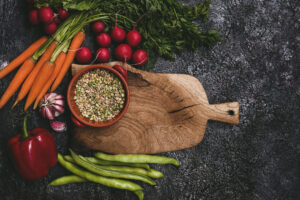 I’ve written about Mediterranean cuisine and the Mediterranean diet before. But it’s worth writing about again because it’s so delicious and so good for you! Cardiologists recommend a Mediterranean diet with its healthy fats, lean proteins and whole grains for weight control and a healthy heart. If there is one word that most defines the cuisines of the Mediterranean, it’s VEGETABLES! Sure, there’s plenty of meat, chicken, seafood and fruit, but the basis is an abundance of vegetables and creative ways to enjoy them.
I’ve written about Mediterranean cuisine and the Mediterranean diet before. But it’s worth writing about again because it’s so delicious and so good for you! Cardiologists recommend a Mediterranean diet with its healthy fats, lean proteins and whole grains for weight control and a healthy heart. If there is one word that most defines the cuisines of the Mediterranean, it’s VEGETABLES! Sure, there’s plenty of meat, chicken, seafood and fruit, but the basis is an abundance of vegetables and creative ways to enjoy them.
When describing a Mediterranean diet, we’re talking about the cuisines of Southern Europe—France, Spain, Italy, Greece, Turkey; the Middle East—Syria, Israel, Lebanon, Iran and North Africa—Egypt, Libya, Tunisia, Algeria and Morocco. These sun-drenched countries have a rich and sometimes fractious history, but they share a tradition of agriculture and cuisines in which plants factor heavily.
The following recipes are a little off the beaten path, but you can easily adapt.
Try a Relish from Morocco
This is really a classic Moroccan relish that can go with meat, fish, chicken or slathered onto a thick slice of toasted rustic bread. To be fully authentic, add a generous splash of orange blossom water, which is available online or in Middle Eastern markets. Otherwise, everything in this recipe is readily available or already in your pantry. Cooked tomatoes have higher levels of accessible lycopene, an antioxidant that contributes to cell health and can help fight cancer.
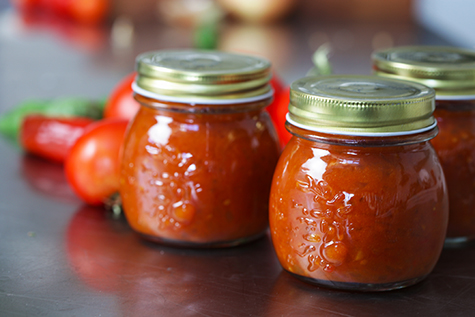
Moroccan Tomato Chutney with Honey & Onion
Serves 4-6
Ingredients
2 medium onions
1 Tbs. olive oil
5 cups ripe cherry tomatoes, cut into wedges
Zest of 1 lemon
¾ cup honey
Sea salt to taste
¼ cup toasted sesame seeds
Splash of orange blossom water (optional)
Instructions
- Slice the onions into ¼-inch rings, then cut the rings in half.
- Warm the oil over low heat and sauté the onions for about 10 minutes, until soft and translucent.
- Add the tomato wedges to the onions along with the lemon zest; cook for another 15-20 minutes.
- Stir in the honey, add the salt, then stir in the sesame seeds. Add a splash of the orange blossom water if using.
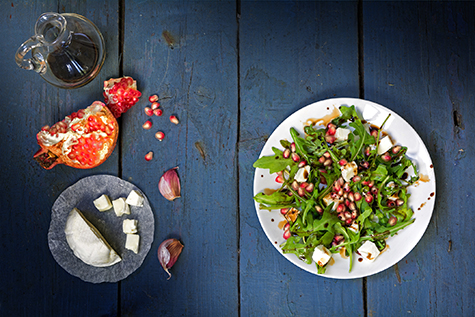
Turkish Salad with Sumac Pomegranate Dressing
This salad calls for samphire, a sea vegetable also known as sea bean, marsh samphire or glasswort. It’s high in protein and packed with vitamins but may be hard to find. It’s mostly available in spring and summer when you may be able to find it at Whole Foods or other specialty markets.
In any case, this salad has plenty of flavor and nutrition without the samphire. The pomegranate seeds and molasses contain antioxidants, while the cheese provides calcium, and the herbs offer more vitamins plus loads of fiber.
Turkish Herb Salad with Feta Cheese and Sumac Pomegranate Dressing
Serves 6-8
Ingredients
1 pomegranate (or packaged seeds found refrigerated in some stores)
2 cloves garlic
4 Tbs. sumac (This is a fruity/citrusy spice found in Mediterranean and Indian cooking. It can be found in almost any ethnic market or specialty store.)
3 ½ fl. oz. pomegranate molasses (found in Middle Eastern markets or online)
1 ¾ cups extra virgin olive oil
½ bunch fresh mint
1 bunch fresh dill
1 bunch fresh oregano
1 bunch flat leaf parsley
1 head butter lettuce
2 cups arugula
Samphire (about 2 handfuls, if using)
8 oz. feta or haloumi cheese
Instructions
- Peel and de-seed the pomegranate by slicing off the top and pulling the fruit apart. Into a bowl, separate the seeds from the white pith.
- Using a hand-held blender or a food processor, puree the garlic, sumac, pomegranate molasses, and olive oil until it becomes a smooth dressing.
- Pull the leaves off the herbs; core and pull apart the butter lettuce leaves and tear them into bite-sized pieces. Place in a large bowl.
- Put in 3/4 of the pomegranate seeds, the arugula and the samphire (if using). Crumble the cheese into the bowl, dress (but don’t drench!) the salad with the sumac/pomegranate molasses dressing (save the leftover for another time); toss well.
- Top with the remaining pomegranate seeds.
Try a Pappardelle Pasta Dish from Sicily
Kofte are long, oval meatballs that arrived in Sicily from Arab cuisine. This kofte can be made with ground lamb, beef, or a light and dark turkey meat blend. It provides lean protein, vitamin E from the almonds, which helps prevent cell damage from free radicals, and cancer-fighting lycopene from the tomato paste.
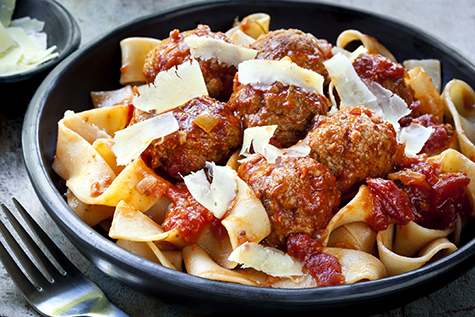
Meatballs with Pappardelle Pasta
Serves 4
Ingredients
2/3 cup almonds
1 bunch fresh basil
2 garlic cloves
3 Tbs. tomato paste
2/3 cup extra virgin olive oil
1 lb. ground lamb, beef, or turkey
Sea salt to taste
Avocado oil for sautéing
1 shallot, chopped
1 lb. ribbon pasta- pappardelle or malfaldine
Instructions
- Using a food processor, pulse the almonds, basil, garlic, 1 Tbs. of the tomato paste into a paste (if you’re a purist, use a mortar and pestle); add in the extra virgin olive oil and salt to taste.
- Mix half the pesto into the ground lamb, beef, or turkey; shape into thin oval-shaped meatballs about ½-inch by 2-inches.
- Heat the avocado oil in a large sauté pan and cook the kofte over medium heat until golden brown; remove from the pan.
- Add enough olive oil to the pan to sauté the shallot; cook over low heat until golden brown; add the remaining 2 Tbs. tomato paste and cook for about 10 minutes.
- While the tomato/shallot mixture is cooking, cook the pasta according to package directions till al dente, then drain.
- Put the pasta in the pan with the tomato/shallot mixture and toss till thoroughly coated and stir in the remaining pesto. Serve on plates topped with the warm kofte.
Roasted Sweet Potatoes with Fresh Figs from Israel
You don’t usually encounter the combination of fresh fruit and roasted vegetables but leave it to the multicultural Israelis to come up with this interesting and delicious side dish. Orange and purple sweet potatoes are full of antioxidants that protect the body from free radicals. They also contain 769% of the daily value (DV) of vitamin A, 65% of vitamin C, plus good amounts of potassium, manganese, copper, and niacin. Fresh figs, which practically grow wild all over Israel, are high in natural sugars, minerals, and soluble fiber. Like sweet potatoes, they’re also rich in minerals including potassium, calcium, magnesium, iron. and copper and are a good source of antioxidant vitamins A and K.
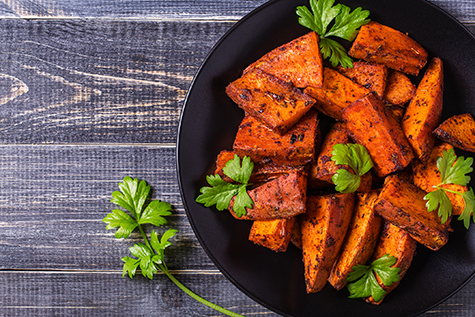
Israeli Roasted Sweet Potatoes with Fresh Figs and Balsamic Reduction
Serves 4
Ingredients
4 small sweet potatoes, scrubbed
5 Tbs. extra virgin olive oil
Juice of ½ lemon
3 Tbs. balsamic vinegar
1 ½ Tbs. superfine sugar
12 scallions halved length-wise, then cut into 1 ½-inch pieces
1 red chile, seeded and thinly sliced
6 ripe figs, quartered
5 oz. soft goat’s milk cheese (optional)
Sea salt and freshly ground pepper to taste
Instructions
- Preheat oven to 475 degrees F.
- Halve the sweet potatoes lengthwise, then cut the halves lengthwise to form 4 wedges from each potato: toss with 3 Tbs. of the olive oil, lemon juice, salt, and pepper.
- Using a rimmed baking sheet, spread the wedges skin side down and bake for about 25 minutes; remove from the oven and let cool.
- For the balsamic reduction, place the balsamic vinegar and the sugar in a small saucepan and heat 2-4 minutes until it begins to thicken; remove from heat. It will continue to thicken up as it cools, so have a ½ tsp. of warm water ready to thin it.
- Arrange the sweet potatoes on a serving platter; heat the remaining oil in a large sauté pan and sauté the scallions and red chile till just limp, about 4 minutes, stirring often. Remove from heat.
- Place the quartered figs in the pan and give a quick stir to incorporate the flavors, then spoon the scallions, chile, oil, and fig mixture over the sweet potatoes; drizzle the balsamic reduction over the whole platter. If using the goat cheese, crumble it over the top and serve at room temperature.